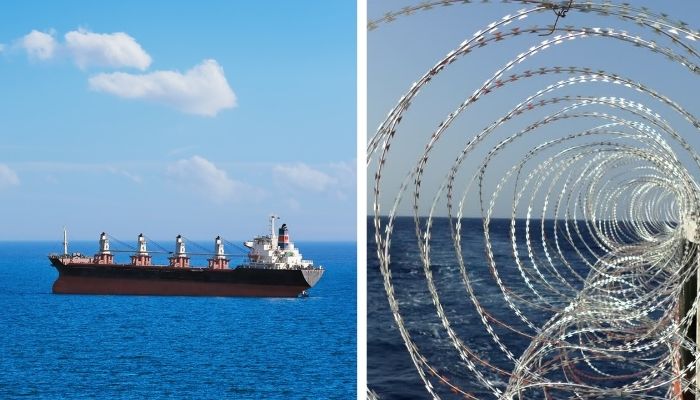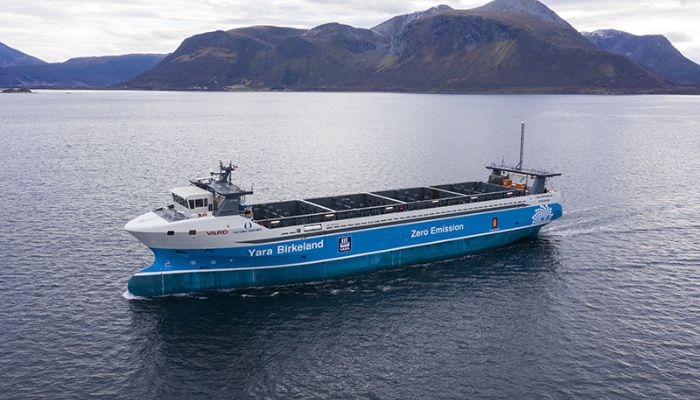Maritime education is evolving with changes in technology, and the transition has accelerated since the beginning of the pandemic. Many more courses are now available online including much of the STCW certificate coursework that seafarers need for licensing.
Classes that require an element of hands-on work can now be found in a “hybrid” or “blended” format with the practical elements conducted in-person and written instructions delivered electronically. Even basic simulation can be conducted remotely using virtual reality headsets, and the student can be thousands of miles away from the instructor.
Distance learning is an established phenomenon in the maritime industry. As a prime example, U.K.-based MLA College (formerly Marine Learning Alliance) has been providing undergraduate and graduate education for maritime professionals online since 2012. Through a partnership with the University of Plymouth, MLA offers Bachelor and Master’s degree programs in maritime operations, oceanography, hydrography and meteorology with an MBA option for those interested in business and management.
The flexibility of the online format has some advantages for globe-trotting maritime professionals. With three “start points” for coursework each year, students can begin their education at MLA when it fits their schedule. There’s no need to obtain visas or relocate across borders since the work can be done anywhere with Internet access.
“As education providers, it’s our responsibility to develop methods which allow quality education to all,” says Professor John Chudley, MLA College’s Rector.
Green Light from Regulators
Online coursework was well-established before the pandemic, but COVID-19 lockdowns exposed many more people to the idea. In the first year of the outbreak, millions of students around the world had to transition to a study-from-home model because schools were shuttered. This shift reached the highly-regulated realm of maritime training too.
In order to keep the industry moving, many flag states expanded the allowable scope of remote delivery for STCW coursework. Flag administrations approved more partially-online “blended trainings” and – for the first time ever – allowed remotely-proctored written exams. The green light from regulators reflects growing acceptance of an online delivery model though much of the hands-on coursework and the practical evaluations for mariners must still be done in person.
“Flag states are certainly much more receptive to applications now and more open-minded about what can be done,” says Raal Harris, Chief Creative Officer at leading training provider Ocean Technologies Group (OTG). “I think the dial is moving to accommodate more remote training – provided standards and learning outcomes are not compromised.”
Beyond COVID safety, remote learning has advantages for both the mariner and shipowner. When attending class online, there’s no need to buy an airline ticket to an academy or pay for a hotel stay during the course. Online training can even be completed during off-hours on board, giving the mariner more time off between hitches. It’s no surprise that OTG reports “more and more” demand for STCW approved e-learning courses, and other providers are seeing the same thing.
“Online training is now a rapidly growing market,” agrees Captain Özgür Alemda?, Founder & CEO of Maritime Trainer, a top training and assessment provider in the eastern Mediterranean. “Upcoming standards and new skillsets to meet regulations for decarbonization, ESG and digitization will require more learning and training, which is driving demand.”
The STAR Center, the Florida academy affiliated with the American Maritime Officers (AMO), has a long history of in-person instruction and prides itself on the strength of its on-campus programs and facilities. But it too is pivoting to meet the demand for online options.
“Students and companies are continually looking for high-quality online and blended programs in order to gain efficiencies,” says Jerry Pannell, the academy’s Director. “STAR Center has developed and is continually improving industry leading and recognized online and blended courses that meet regulatory requirements.”
Other U.S. training providers are tracking the same trend. Connecticut-based online training company Mariner Skills has been offering remote-learning STCW courses since 2015 and says that COVID lockdowns have changed the industry. “One of the largest impacts on maritime training after the pandemic is the near-universal acceptance of online training solutions,” explains CEO Anush Ramachandran.
The company has experienced nearly 100 percent year-over-year growth for the past two years, and Ramachandran credits the U.S. Coast Guard’s decision to allow remote proctoring for much of its expansion. The Coast Guard greenlighted digitally-monitored remote exams in 2020, and while the agency’s decision was aimed at reducing COVID risk it also removed the only travel requirement for written coursework – the in-person exam.
“For an online training provider like Mariner Skills, this opened the entire U.S. market, if not the global market,” Ramachandran says.
Mariner Skills has broad ambitions for its STCW courses. Modern maritime training incorporates hours of simulation, and most flag states require that this portion of the coursework be done in person. But by this fall Mariner Skills expects to roll out cloud-based simulation for many of its trainings through a partnership with a leading sim provider. “This will open up a large number of courses for online learning,” predicts Ramachandran.
VR & AR
Many expect that virtual reality and augmented reality (VR/AR) technology will democratize simulation and make it practical for remote learning programs. Off-the-shelf VR goggles create a reasonably realistic bridge experience for just $200 in equipment, and for some applications this level of fidelity is enough.
“I think there are trainings we could do at the entry level, like basic rules of the road,” notes Jon Kjaerulff, Director of Business Development for MITAGS, the U.S.-based training academy affiliated with the Masters, Mates & Pilots (MMP). “You could have students all over the country or a classroom of people, all wearing headsets. And all of them could be on the same virtual ‘bridge’ for the training.”
Kjaerulff thinks VR will eventually become part of the curriculum so long as it can be done in a way that meets industry and regulatory standards. The concept has already been used for practical applications in several nations including Norway, Japan and Australia. Since VR equipment fits in a shoebox and doesn’t break the bank, it can be acquired by individual companies for their own informal training or even purchased by mariners for practice on board.
“I believe VR and AR will become more mature, better understood and therefore more widely considered in the next three to five years with the help of developments in devices and technology,” says Captain Alemda? of Maritime Trainer, which has been building its own VR tools for several years. “But industry-wide adoption will certainly need to be supported by standards.”
In-Person Training
Traditional in-person learning still has a big role to play, especially now that pandemic restrictions have lifted and some academies are expanding their campuses and course catalogues. For example, MITAGS-West in Seattle has just created a one-of-a-kind damage control training module based on U.S. Coast Guard and Navy standards. Every naval force trains its sailors for hull breaches and flooding, and for good reason, but these hands-on lessons are missing from STCW education for merchant shipping.
MITAGS hopes that operators will see the practical value of having their mariners build damage-control skills with first-hand experience, just like they do for STCW-required safety and survival training. “We see the attraction of remote learning, but you know, there are certain things that are always going to be best in person,” says Kjaerulff. “I mean, I really would worry about somebody who got all their first aid training online.”
In addition to hands-on safety training, both MITAGS and STAR Center see a big future for in-person assessment programs, which put vessel operators’ seagoing employees to the test. This is an inherently hands-on process requiring qualified assessors and high-end simulation.
“Our assessment programs, including navigational watchkeeping, engineering and behavioral based competency, have continued to grow and expand,” says STAR Center’s Pannell. “More importantly, the acceptance from the maritime community of assessments and the follow-up training that may be identified has been encouraging.”
In-person training is thriving at Southern California’s Orange Coast College, which recently expanded its waterfront campus. OCC’s two-year program mints new mariners for yachts and commercial vessels, and some of its graduates go on to finish four-year degrees at state maritime academies. The college has its own marina with a fleet of 40+ small craft for underway training and assessments.
OCC’s program holds a MARAD Center of Excellence designation, one of 27 in the U.S., and the college is expanding to accommodate its success. In September 2021, OCC opened a new mariner training center with three classrooms, a full mission bridge simulator and a conference space. “It essentially doubled our campus size,” says Sarah Hirsch, Director of OCC’s Waterfront Campus. “Students can do their desk work, they can do their simulator training, then walk down to the waterfront and get on a boat.”
Jobs Waiting
OCC’s program emphasizes the practical side of the business, and students get exposure to local maritime enterprises across the spectrum. When they graduate – or even beforehand – they can choose where they want to go, says Hirsch. Word has gotten round, and her staff members sometimes have to fend off employers who want to hire away OCC’s students early. “You know, it’s every other day that someone sends us an offer,” she says. “We tell them we’ll pass on their contact info after graduation.”
Source: https://www.maritime-executive.com/magazine/training-goes-virtual










